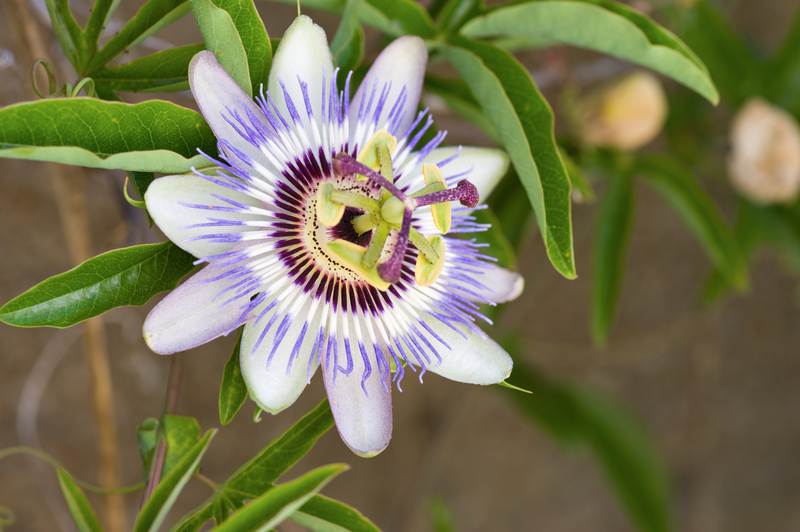Waste Wasters: Let's Make Soil Rich
Posted on 24/08/2025
Waste Wasters: Let's Make Soil Rich
Are you ready to revolutionize the way you handle waste and boost the vitality of your soil? Welcome to the world of Waste Wasters--an ever-growing movement dedicated to transforming our organic waste into black gold for gardens, farms, and landscapes. If you wonder how to enhance soil fertility, reduce landfill stress, and embrace sustainability, this comprehensive guide is for you!
What Are Waste Wasters?
The concept of Waste Wasters revolves around minimizing organic waste, diverting it from landfills, and turning it into valuable soil amendments. Essentially, Waste Wasters are enthusiastic individuals or communities committed to managing kitchen scraps, yard clippings, leaves, and other biodegradable materials responsibly. Their secret? Transforming waste into rich, healthy soil.
- Reducing landfill contributions
- Enriching soil health naturally
- Promoting sustainable gardening practices
By following the Waste Wasters' philosophy, you can create a closed-loop system that nourishes the earth while minimizing your ecological footprint.

Why Should We Make Soil Rich?
Rich, fertile soil is the foundation of healthy plants, bountiful harvests, and resilient ecosystems. The benefits of enhanced soil fertility include:
- Increased nutrient availability for plants
- Improved soil structure (better aeration and water retention)
- Boosted biodiversity in the soil microbiome
- Greater crop yields and garden productivity
- Reduced dependence on chemical fertilizers
If you're a home gardener, urban farmer, or simply care about the environment, Waste Wasters can help you make your soil as rich as possible, naturally!
Understanding Soil Enrichment: Core Concepts
Soil enrichment simply means improving the quality and fertility of soil using organic or natural methods. This involves:
- Adding organic matter such as compost
- Promoting beneficial soil organisms like earthworms and microbes
- Improving soil texture for better plant growth
Waste Wasters prioritize these steps, using kitchen scraps, leaves, grass clippings, and even coffee grounds to build and replenish soil.
Types of Organic Waste for Soil Improvement
- Vegetable and fruit scraps
- Coffee grounds and tea leaves
- Eggshells
- Herbivore animal manure (e.g., from rabbits, chickens)
- Leaves, grass clippings, and small twigs
- Cardboard and paper (shredded)
Avoid meat, dairy, and oily foods as they can cause odor and attract pests.
The Waste Wasters' Methods for Making Soil Rich
1. Classic Composting
Composting is at the heart of every Waste Waster's toolkit. This simple, effective method uses a balance of "greens" (nitrogen-rich materials like food scraps and fresh grass) and "browns" (carbon-rich materials like dry leaves and cardboard).
Key composting tips:- Maintain a ratio of about 2 browns to 1 green for best results
- Keep the pile moist but not soggy
- Turn the pile weekly to provide air and speed decomposition
- Harvest rich, dark compost in 2-6 months
Finished compost can be mixed into garden beds, spread on lawns, or sprinkled around trees and shrubs to invigorate the soil.
2. Vermicomposting (Worm Composting)
Waste Wasters bring in the worms--nature's master recyclers! This method uses red wiggler worms to rapidly process food scraps and paper waste, producing a nutrient-rich worm castings that's like magic for plant growth.
- Set up a worm bin with drainage and proper bedding (shredded newspaper or coconut coir).
- Add food scraps in small amounts, avoiding citrus, onions, and spicy foods.
- Harvest worm castings every 2-4 months and add them to soil mixes, seed starting trays, or established beds.
Worm composting is ideal for apartments and urban settings--no yard required!
3. Bokashi Composting
An excellent option for the committed Waste Waster, Bokashi uses beneficial microbes to ferment food scraps and even small amounts of meat and dairy. It's nearly odorless and very fast.
How Bokashi works:- Layer waste with Bokashi bran in a sealed bucket.
- When full, let it ferment for two weeks.
- Bury the contents in the soil--a rich amendment for your garden!
4. Sheet Mulching (Lasagna Gardening)
Layer your wastes directly onto soil, mimicking nature's forest floors! Combine cardboard, leaves, grass, food scraps, and compost in alternating layers to slowly decompose into humus-rich soil.
- Suppresses weeds effectively
- Boosts moisture retention and microbial activity
- No turning or heavy lifting required
Benefits of Turning Waste into Rich Soil
Why embrace the Waste Wasters' methods? Here's why this lifestyle is so impactful:
- Reduces municipal waste and landfill methane, shrinking your carbon footprint
- Improves plant health--composted soil is less prone to disease
- Saves money on commercial fertilizers and soil amendments
- Supports local ecosystems by creating habitat for earthworms, fungi, and beneficial bacteria
- Empowers home and community gardens to thrive--right down to the roots!
Healthy soils mean healthy communities. When we waste less and compost more, we feed not just our plants but entire chains of life.
Getting Started: A Waste Waster's Action Plan
Step 1: Set up a Collection System
Place a countertop compost bin or dedicated pail for vegetable peels, coffee grounds, eggshells, and tea bags. For yard waste, designate an outdoor pile or bin.
Step 2: Choose Your Method
Pick one or more soil enrichment methods--composting, vermicomposting, Bokashi, or sheet mulching--depending on your space, climate, and enthusiasm!
Step 3: Build Your Compost Pile or Bin
Follow the browns-to-greens ratio and keep things moist. Chop large pieces for faster breakdown.
Step 4: Monitor and Maintain
Turn compost piles regularly, check for moisture, and add material as needed. With worm bins, watch your worms thrive (and avoid overfeeding).
Step 5: Use Your Rich Soil
Amend garden beds, top-dress lawns, or mix with potting soil--all with homemade, nutrient-dense compost!
Advanced Tips--Waste Wasters' Secrets for Maximum Impact
- Balance is everything: Keep a good mix of green and brown to avoid odor or slow decomposition.
- Go beyond the kitchen: Collect friends' or neighbors' waste or join community compost programs.
- Add rock dust or biochar: These boost soil mineral content and improve structure.
- Plant cover crops: Rye, clover, or vetch lock in nutrients and fix nitrogen naturally.
- Harvest & apply: Don't let rich compost go to waste--apply it seasonally as mulch or soil booster.
Common Questions about Waste Wasters and Rich Soil
How long does it take to make rich compost?
Traditional compost piles can take anywhere from two to six months, depending on temperature, moisture, and turnover. Worm bins often produce castings in 2-4 months, while Bokashi is ready to be buried after 2-4 weeks of fermenting.
How do I know my compost is ready?
The finished compost should be dark, crumbly, and earthy-smelling. There should be no recognizable food scraps left. If in doubt, let it mature a few more weeks.
Will composting attract pests?
If done correctly, compost bins do not attract pests. Bury food scraps under browns, keep the pile moist (not wet), and avoid adding meat or dairy products.
Can I compost in a small space?
Absolutely! Worm composting and Bokashi bins are perfect for apartments or city living. They're tidy, odorless, and easy to manage indoors or on balconies.
Is homemade compost safe for all plants?
Yes, as long as the compost is fully broken down. Avoid using unfinished compost with woody bits, as it can rob nitrogen from your soil temporarily.
Waste Wasters in Communities: Scaling Up Soil Richness
The Waste Wasters movement isn't limited to homes--schools, businesses, neighborhoods, and farms can all join in! Community composting hubs turn public food waste into nutrient-rich soil for parks, food forests, and urban gardens, closing the loop for entire cities.
- Organize local compost drop-offs and pickups
- Host workshops to teach composting skills
- Encourage restaurants and markets to separate food scraps
- Support municipal compost collection initiatives
When Waste Wasters unite, communities become greener, more resilient, and more sustainable.

The Big Picture: Waste Wasters for a Greener Future
By embracing waste-to-soil enrichment, we tackle some of the world's most pressing challenges--climate change, food security, and soil degradation. If every household adopted composting, we could keep millions of tons of organic matter out of landfills and feed billions of plants instead!
It's time to be a Waste Waster--whether at home, school, or work. Start small, share your journey, and watch your soil (and your surroundings) become richer, greener, and more alive than ever before!
Conclusion
The Waste Wasters' mission is not just about reducing waste; it's about connecting with the cycles of nature, building healthy soil, and fostering sustainability for future generations. By transforming what we throw away into rich, life-giving soil, we become stewards of the earth--one compost pile at a time.
Let's waste less, make soil rich, and grow a more sustainable future--together!
Ready to start your Waste Wasters journey?
Share your experiences, tips, and questions below--let's build a community of soil champions!

